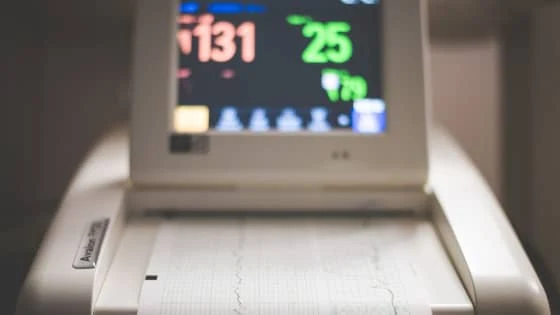A heart rate monitor is an electronic device that measures the heart rate of a person. It is a commonly used medical device that helps in monitoring the heart's health and detecting abnormalities. In recent years, with the increasing use of microcontrollers, heart rate monitors have become more efficient, accurate, and portable.
A heart rate monitor project using a microcontroller typically involves the use of a microcontroller board, sensors, and a display unit. The microcontroller board is the brain of the project, which receives the signals from the sensors and processes the data to display the heart rate on the display unit.
The project is divided into two subsections: the plethysmograph and the LED display.
A plethysmograph is a device that senses the change of the volume in an organ. For our purposes, we use an infrared light emitter and receiver to sense the change in the amount of blood in an extremity such as a finger or ear lobe.
As for the LED display, individual LEDs that would be controlled by the microcontroller are manually wired into a shirt.
The sensors used in the project can be of different types. The most commonly used sensor is the photoplethysmography (PPG) sensor. It works by measuring the changes in blood volume in the vessels under the skin. The PPG sensor emits a light source, which gets absorbed by the blood vessels and reflects back to the sensor. The microcontroller board receives the signal from the PPG sensor and processes it to calculate the heart rate.
Another sensor that can be used is the electrocardiogram (ECG) sensor. It measures the electrical activity of the heart and provides a more accurate measurement of the heart rate. However, it is more complicated and expensive than the PPG sensor.
The display unit can be an LCD display or an OLED display. It displays the heart rate measured by the sensors. The display can also be configured to show other parameters like the time, date, and battery level.
The microcontroller used in the project can be an Arduino board, Raspberry Pi, or any other microcontroller board with analog and digital input/output pins.
The microcontroller board receives the signals from the sensors, processes the data, and sends it to the display unit for display. The microcontroller can also be programmed to sound an alarm if the heart rate goes above or below a certain threshold level.
Author:- Vivian Jang and Nick Lee
Source:- Cornell University
Advertisements:-





![[2025] In-Demand Final Year Projects for Computer Science](https://blogger.googleusercontent.com/img/b/R29vZ2xl/AVvXsEiPLaQX8S831tmthK7PFgJ6KJQdDJWs5NsY3QREotosR7GUpFsyaw7w80Lrt2nBuz-02KsN5TxtaYtF21u7HLSKFQPxyncmbrOWF3n3DQNiEKCjFb9p4I4-3yYoxKKijLL0lNqaHeCMK1VmZSwEFP2e4esMfpyqMv6iBv6bSe4ZsmmKkOTYEgD47RFYDjE7/s72-c/In-Demand%20Final%20Year%20Projects%20for%20Computer%20Science.jpg)
![Final Year Projects for CSE [2025]](https://blogger.googleusercontent.com/img/b/R29vZ2xl/AVvXsEicwsr89FawhHP1j_XcxTGTU5DxuevpZUQTgFlo_rzjh2YOVGC68ii16T6I7pLcUrR9mu9pVkGsEe_eXBWZhf3fBL-MyLFmw8l0BhRYNOEchX5TlIPCvHoiED-Ix_ZpIbH7T7bklprg5YlabbOX6fPz1Y5-Q4TF7i-MLIEAfbaSjvsJmbnTr91t8i_7Ag/s72-c/final%20year%20projects%20for%20cse.png)



No comments:
Post a Comment